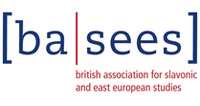Discussion
For many of central and eastern Europe’s kin-state minorities, access to a larger media sphere is often the only way to enjoy a holistic offer – or functional completeness (Moring, 2007) – in their mother tongue. Article 11 of the ECRML encourages the development of media in a minority language in the host state, yet it also calls for the freedom to access media in neighbouring countries. Moreover, literature on MLM points to the need for one’s own media as a voice for the community and the ability to organise politically (Cormack, 2007). Pan-European minority activism itself has called for removal of geoblocking to ensure access to media across borders (European Citizen’s Initiative (n.d). At the same time, the concern of kin-state interference or influence through minorities’ consumption of media has been raised (Dougherty & Kaljurand, 2015; Kiss, 2018).
Within this context, this roundtable aims to discuss to the balance of these two aims, providing evidence from several cases of kin-state minorities and the broad trends of consumption of host-state minority language media and media from their kin state. This also intends to unpack the changes over history and outline what a best practice could look like. The series of triadic nexuses covered by the expertise of the roundtable participants include Hungarian, Italian, Romanian, and Russian minorities, their respective kin-states and the additional host states of Croatia, Estonia, Latvia, Moldova, Slovenia, Serbia and Ukraine
References:
Cormack, M. (2007) ‘Introduction: Studying minority language media’. In Cormack & Hourigan (eds.)
Minority Language Media. Concepts, Critiques and Case Studies. Clevedon, Buffalo, Toronto: Multilingual Matters. pp. 1-16.
Dougherty, J., & Kaljurand, R. (2015)
Estonia’s ‘virtual Russian world’: The influence of Russian media on Estonia’s Russian speakers. Tallinn: International Centre for Defence and Security.
European Citizen’s Initiative (n.d)
Minority SafePack – one million signatures for diversity in Europe.
Kiss, T. (2018) ‘Media Consumption and the Hungarian-Language Media in Transylvania’. In: Kiss et al. (eds.) Unequal Accommodation of Minority Rights. Palgrave Politics of Identity and Citizenship Series, Palgrave Macmillan.
>Moring, T. (2007) ‘Functional completeness in minority language media’. In Cormack & Hourigan (eds.) Minority Language Media: Concepts, Critiques and Case Studies. Clevedon and Buffalo: Multilingual Matters, pp. 17–33.

